For 70 years, Christmas trees were the family business. Then came drought. And fire

- Share via
PLACERVILLE, Calif. — Omer and Elinor McGee opened El Dorado County’s first Christmas tree farm in 1952 in Grizzly Flats, a Gold Rush-era mountain town some 25 miles from the county seat. The business prospered, and their son Mike eventually took over.
The following years delivered joy but also heartbreak: dry winters and financial strain, the death of Mike and Phyllis McGee’s youngest son, Cory.
But when the COVID-19 pandemic hit, something unexpected happened: Cars wrapped around Mike and Phyllis’ Placerville ranch and spilled from the parking lot. Families eager for a dose of good cheer and a breath of pine-scented air bustled through rows of conifers, seeking the perfect tree from McGee Christmas Tree Farm.

Then came the drought. Low rainfall and a declining snowpack, combined with high temperatures, battered the McGee Christmas trees.
Of the seedlings Mike planted in February, one of the hottest and driest on record, 80% died by July. In August, thousands of mature Christmas trees became kindling for a massive wildfire.
“Sometimes Mother Nature helps you, and sometimes Mother Nature hurts you,” Mike said in early September. “That’s farming.”
Wild conifers, which have proliferated in the American West for hundreds of thousands of years, are struggling to survive after fires, especially in low-elevation forests. Drought and wildfire have been cruel, not only to Christmas trees but to California’s ponderosa pines, redwoods and sequoias.

“People revere some of these big, old trees, and we’re losing them,” said Meg Krawchuk, an associate professor in the Department of Forest Ecosystems and Society at Oregon State University. “The climate crisis — and our land management crisis — is killing them.”
In part because of this, fewer Christmas trees are likely to be available this holiday season, and they will come with a higher price tag, said Jami Warner, executive director of the American Christmas Tree Assn.
“Price increases and shortages are the result of extreme weather events in the Pacific Northwest and Midwest, supply chain congestion in and out of ports, trucking and domestic shipping issues and shipping container shortages,” she said.
For the McGees, the environmental crisis dovetailed with a personal one. Mike, 69, was diagnosed in 2015 with amyotrophic lateral sclerosis, or ALS. The progressive neurodegenerative disease steals a person’s ability to speak, move and, eventually, breathe.
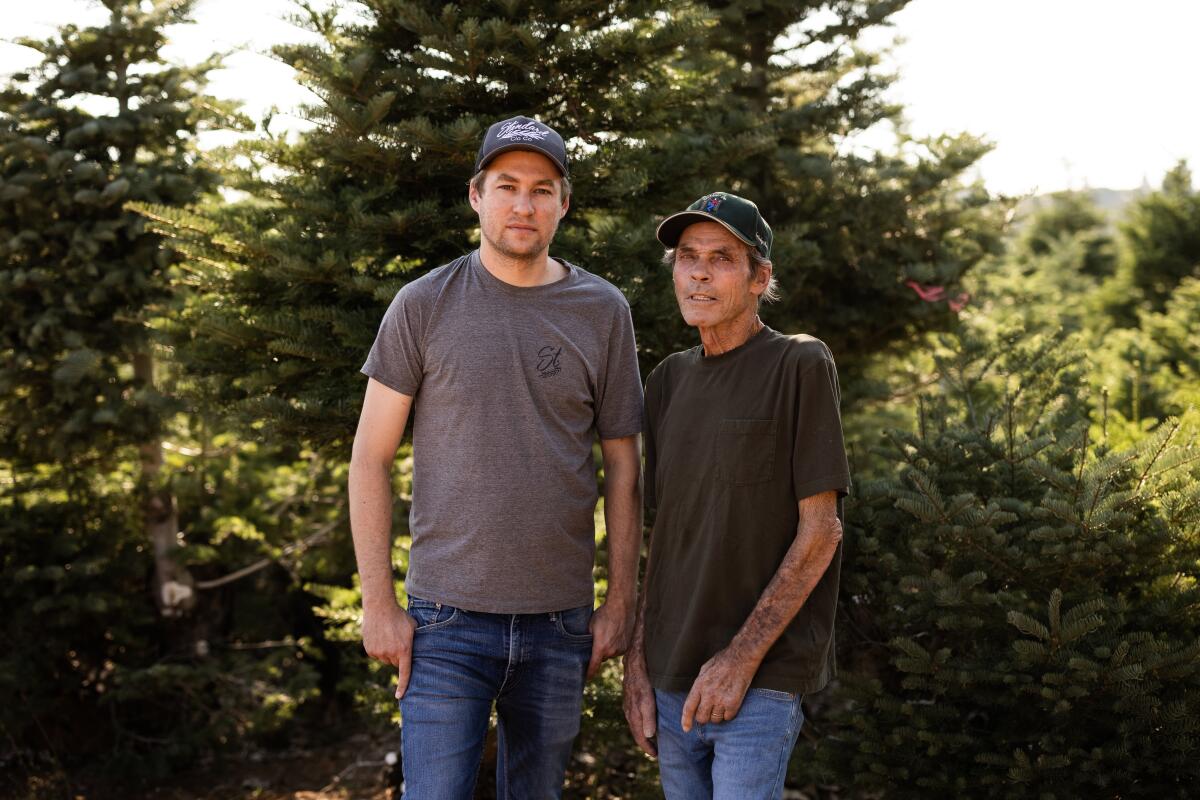
This summer, as Mike struggled against the disease, he passed the business to his son Eli, the one who dreamed of being a pilot or a teacher; studied at UC Davis; married his high school sweetheart, Rachel; and had a job at a biotech company in San Luis Obispo, 340 miles away.
Eli, 34, had always thought his outdoorsy kid brother, gone now for years, would become the tree farmer. Fate decided otherwise. Now, Eli must learn to be the farmer his father became after decades tilling the soil.
“I’m trying to see the trees the same way he does,” Eli said.
::
Mike had taken over the family farm in 1978, when he planted his first rows of conifers in what had once been a pear orchard. Two years later, he met Phyllis, a nurse and single mother of two girls. Eli, born in 1987, spent his childhood nestled in Mike’s backpack while his dad tended the trees and Phyllis helped patients at Marshall Medical Center in Placerville.
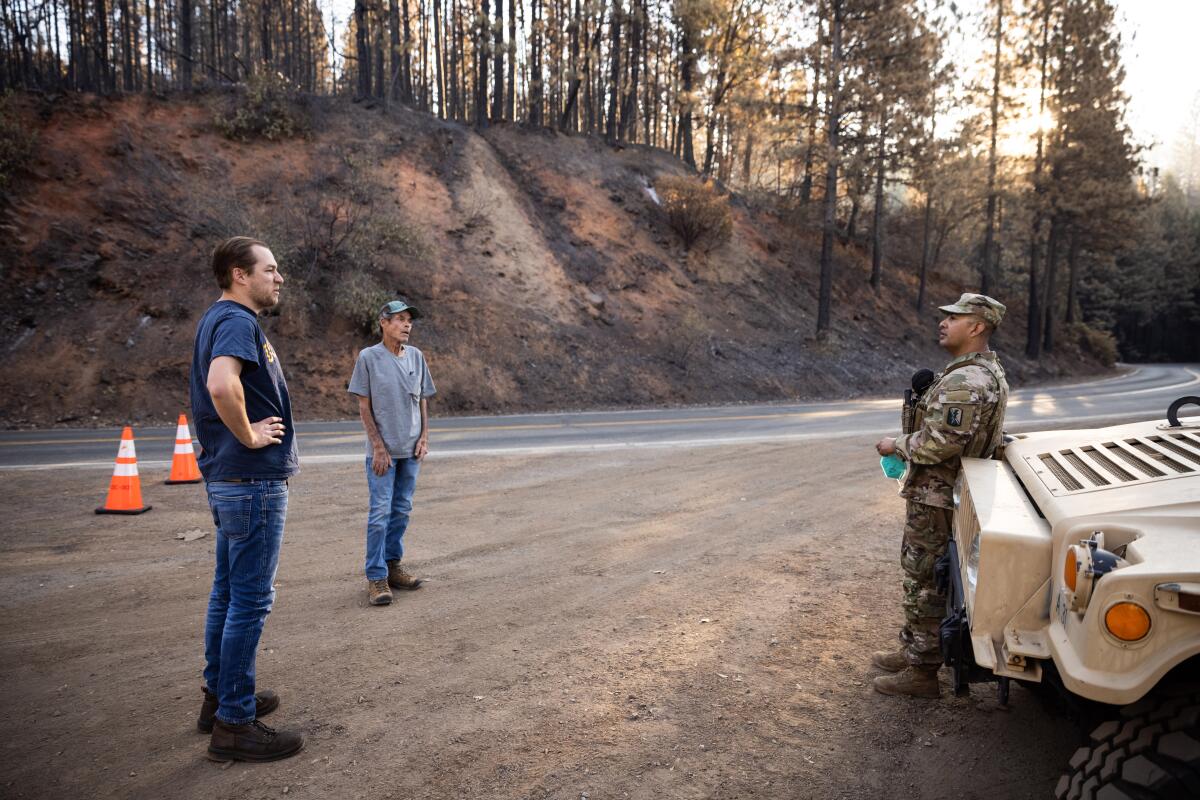
In 2012, tragedy struck. Their son Cory, 22, was killed in a car crash on Carson Road, leading home to the farm.
For years, Phyllis said, she asked herself, “Am I going to lay in bed and cry today? Have another glass of wine? And is that going to help me? Or am I going to get out there and do something positive?” The family trucked on.
Then, one day, Mike’s arm started twitching, and Phyllis noticed his shoulder drop. He was diagnosed with ALS. Working the farm, as he had for decades, became a mounting challenge.
“This is how determined he is,” said his wife of nearly 40 years. “He’ll work for a half hour trying to get a bolt and a screw in before he says, ‘Can you help me?’ He’ll try it and try it and try it, and then come in and say, ‘You got five minutes?’”
As his father’s disease progressed, Eli and Rachel had a decision to make. For 12 years the couple had lived happily in a one-story home in San Luis Obispo on two incomes, with their dog and a solid group of friends.
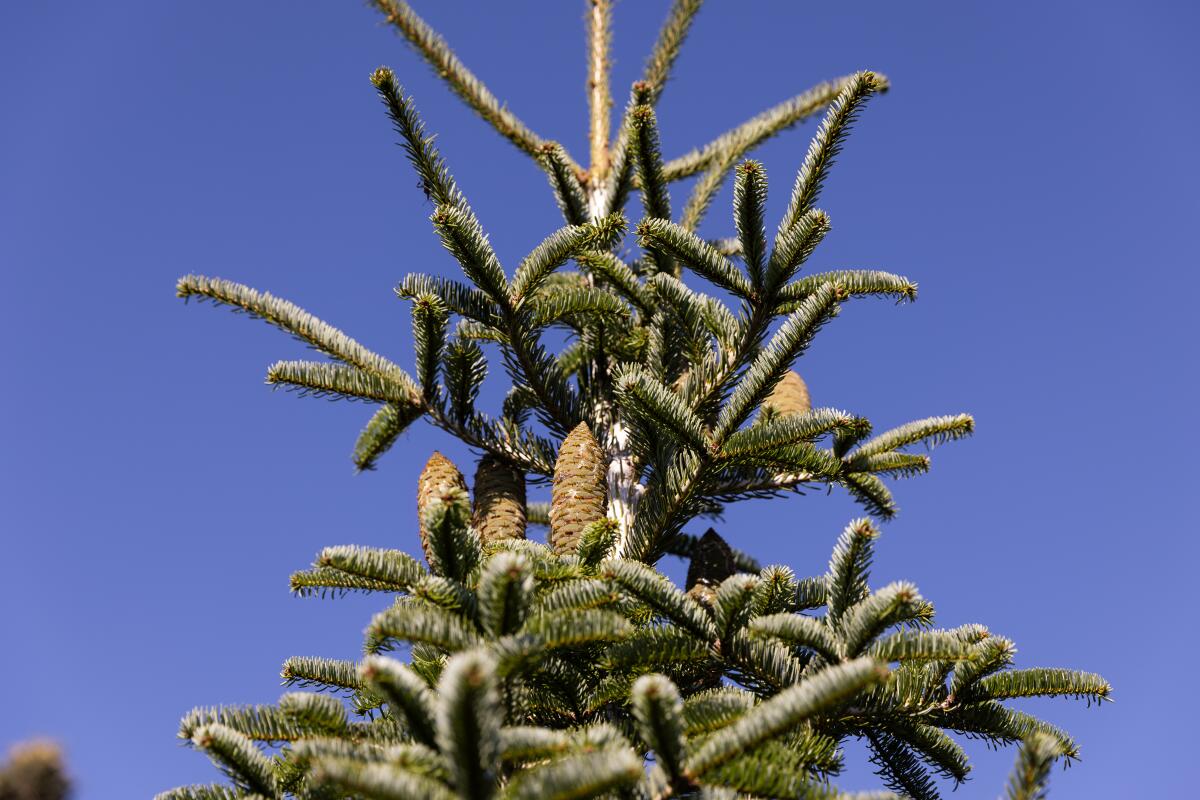
“We had a great life,” said Rachel, a registered nurse.
She applied for a job at Marshall Medical Center and got the offer in March. In June, Eli traded in his safety goggles for work boots and changed his occupation on Facebook from “manufacturing scientist” to “tree farmer.” Phyllis, overwhelmed with joy and relief, broke down in tears. Tree farming was “in Mike’s blood,” she said, “and I think it’s in Eli’s blood.”
Asked what it meant to him that his son would carry on the family tradition, Mike’s reply was simple: “Everything.”
::
By June, Eli was inheriting Christmas trees caught in the hot glare of drought.
The 2,000 seedlings his dad had purchased in February hadn’t fared well. Mike had waited days to plant them with rain.
“That’s when it really hit,” Mike said, recalling the dry winter months. “We were waiting for that good rain to get out there and plant, and it never came.”
Mike planted them anyway. He had to. But the young trees suffered. By spring, they were yellowing, and by summer, they were crispy and brown. By Eli’s estimate, 80% — 1,600 Christmas trees — were dead.
In July, Gov. Gavin Newsom asked Californians to voluntarily cut water usage by 15%. The El Dorado County Irrigation District issued its own request to customers, encouraging the same. But the McGees, like an overwhelming majority of Californians, didn’t comply. The farm, their livelihood, was at stake.
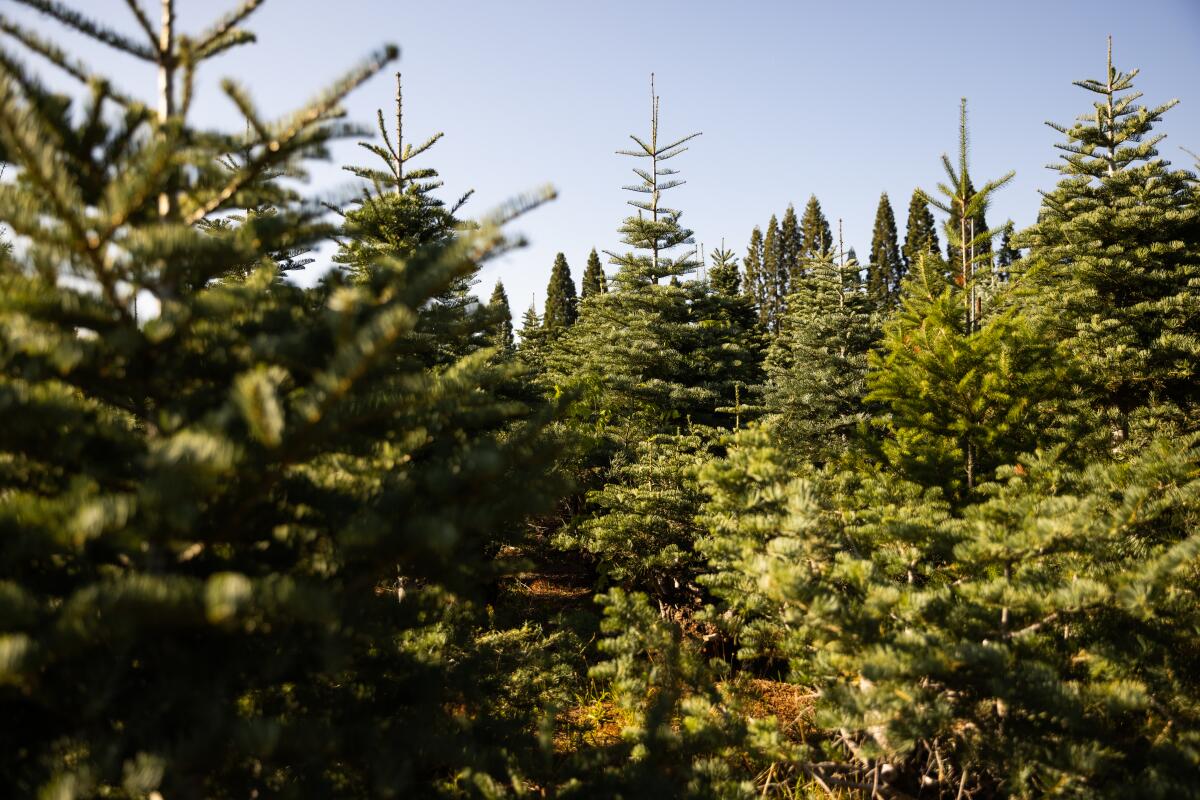
During previous winters, the family had been able to rely on snow and rain to water the trees, a ritual so time-tested that Mike typically turns off and drains his irrigation system at the first cold snap in late fall and keeps the water off through spring.
This year, that wasn’t possible, Eli said. To save their seedlings, the McGees ramped up water usage to 773,200 cubic feet in the first 10 months of the year — a 12% increase from their 2019 and 2020 average.
The McGees had already reduced their water usage after switching out an old irrigation system around 2010. There wasn’t more to spare.
“If we don’t water,” said Eli, “our income goes away.”
Then came the Caldor fire.
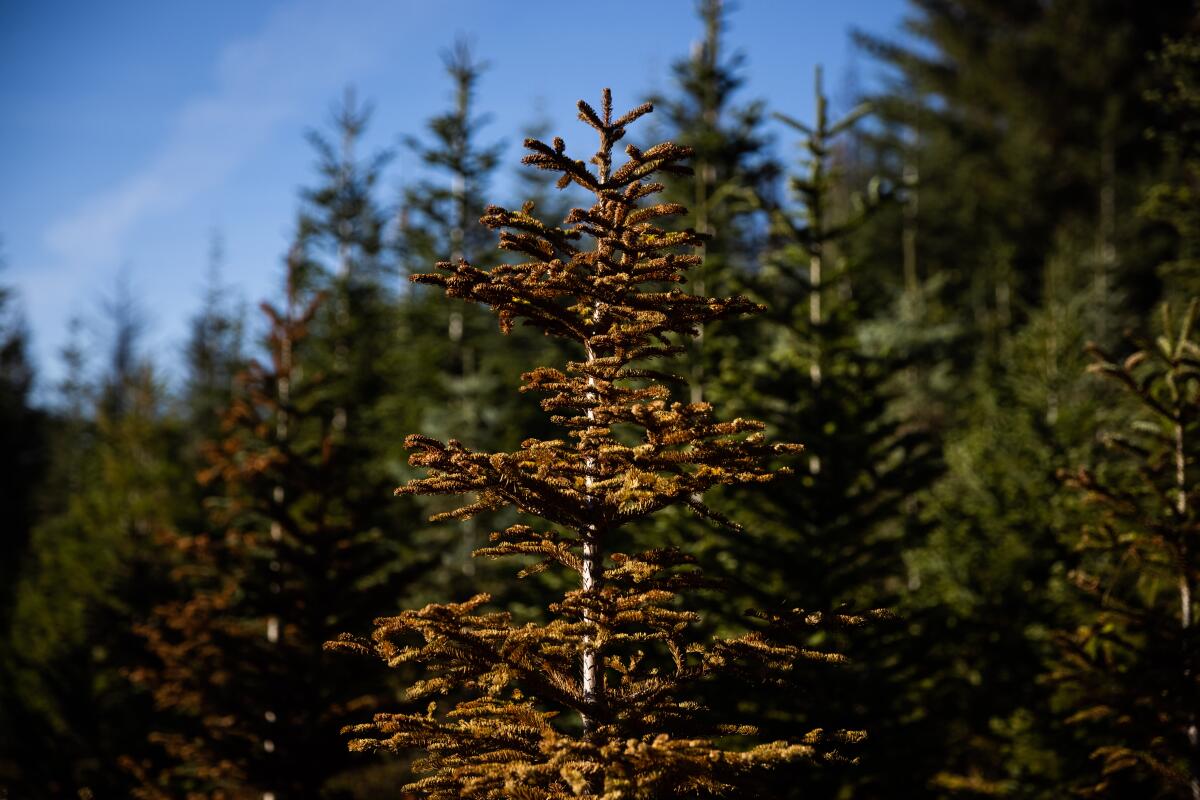
::
Joseph Stewart, an ecologist with UC Davis, spent August in the burn scar of the 2018 Camp fire, trying to figure out how to regrow tens of thousands of acres of charred conifers.
A study Stewart published last year found that severe fires, burning at higher temperatures across larger swaths of land, aren’t just wiping out conifers in the immediate term; they are making it harder for California’s most prolific trees to reproduce in the aftermath — especially during a drought.
California’s low-elevation conifers have adapted to frequent, low-severity fires but not to high-severity, high-heat fires, Stewart said. Without help from scientists, patches of densely packed trees that once defined the Northern California landscape might not grow back.
The reason for this is twofold. Conifers carry seeds in cones, and it’s not easy for those seeds to travel to the interior of increasingly large burned patches. Second, the seeds that do make it have lost the shade once provided by the canopy overhead and are having trouble establishing themselves in increasingly hot, dry conditions.
Seeking higher altitudes with more favorable reproductive conditions, conifers are creeping upslope.
“Big picture,” Stewart said, looking out across rolling hills dashed with blackened trees, “we’re going to lose conifers from the lowest elevations.”
Warner, of the Christmas tree association, has one piece of advice for consumers: “Find and buy your Christmas tree early.”
::
Mike and Eli were visiting their hunting cabin in Nevada when the wild sugar pines and white firs southeast of their Placerville ranch burst into flames.
Within days, the Caldor fire raced toward their second farm in Grizzly Flats. The farm was a gift to Eli and Cory from their grandparents. The trees Mike grew there put Eli through college.
By mid-August, the fire had reduced two-thirds of the homes in Grizzly Flats to ash. For weeks after, the McGees waited to learn the fate of their farm. Sitting on their front porch in early September, the family members feared the worst.
“The houses that surround our property are total losses,” said Eli.
“I think it’s gone,” added Phyllis. She mourned not only the economic loss and the loss of a beloved natural landscape but the time, effort and energy her family had poured into the land.
She thought of their customers, like Justin Dal Pozzo, who for 30 years has greeted her at their Placerville ranch on the Friday before Thanksgiving, wearing a fleece-lined denim jacket, blue jeans and a cowboy hat — no shirt, no shoes.
Christmas wouldn’t be the same without the McGees, Dal Pozzo said. Finding the perfect tree at their farm initiates a revered annual ritual. After placing the tree in a stand filled with warm water and sugar, Dal Pozzo decorates. He dresses the tree with strings of lights, ornaments and silver tinsel — the same way his mother and grandmother did.
“The old Italian style,” he said, laughing. “They’re a major part of my celebrating the season. If they weren’t there, I would be heartbroken.”
One Monday in late September, Mike and Eli drove the familiar, winding roads to Grizzly Flats. Passing charred forest and homes that had been swallowed by flames, they kept the conversation to business. They evaluated the hours it would take to get the farm back into shape and discussed the possibility of irrigating with on-site well water.
What Mike and Eli saw when they opened the car door and walked onto the farm were the “blackened skeletons of Christmas trees,” Eli said.
Nearly half of them — thousands of trees — had burned.
::
The fire in Grizzly Flats left Eli with several questions.
Surveying the damage, and evaluating the work ahead, he wondered if he should just sell that farm. Losses from the blaze totaled nearly $75,000. To rebuild, he’d need to remove the dead trees and restore the fence. But he’d also have to decide whether to build the farm’s first irrigation system, a project expensive in time and resources.
“It seems like it’s worth it,” he said, finally. “I just moved here and started doing this. I don’t want to give up on something already.”
But as water becomes an increasingly scarce resource in California, Eli has his doubts. Christmas trees are his family’s business, and they make people happy, he said.
“But is it taking water out of someone’s mouth, or should we be using water differently? Right now, it seems fine. But who knows?”
Rachel, more decisive, worded it strongly: “It’s a little scary to think all your assets could be completely combustible,” she said.
Amid the uncertainty, one thing is clear. The average life expectancy for a person diagnosed with ALS is two to five years. Mike has lived with the disease for six. He can no longer grasp his trusted clippers or drive the tractor. Phyllis helps him change the oil in his mower.
“If I had a crystal ball that said, in eight weeks, your husband will be dead, or in eight weeks, he won’t be able to walk ... I don’t think I really want to know that,” Phyllis said.
On a warm September afternoon, Mike and Eli walked side by side through rows of trees, when Eli stopped to bend over a shock of white, flowering weeds. “Is that Queen Anne’s lace?” he asked. “Milkweed?”
Mike advised Eli to smell it. “Anise,” he told his son.
Since Eli returned to the family farm, the two have spent hours on the porch, talking about life and Christmas trees. Mike imparts lessons Eli has heard since he was a boy: “There’s faster and easier ways to make a buck” and “Only do it because you like it.”
At sunset, Eli ventured out, alone, down the porch steps. He stopped in front of a tree riddled with gaps between its branches. He studied it carefully, focusing on two small sprigs, one growing out and one growing up.
He thought of his dad’s clippers. He envisioned the perfect cut.
More to Read
Sign up for Essential California
The most important California stories and recommendations in your inbox every morning.
You may occasionally receive promotional content from the Los Angeles Times.














